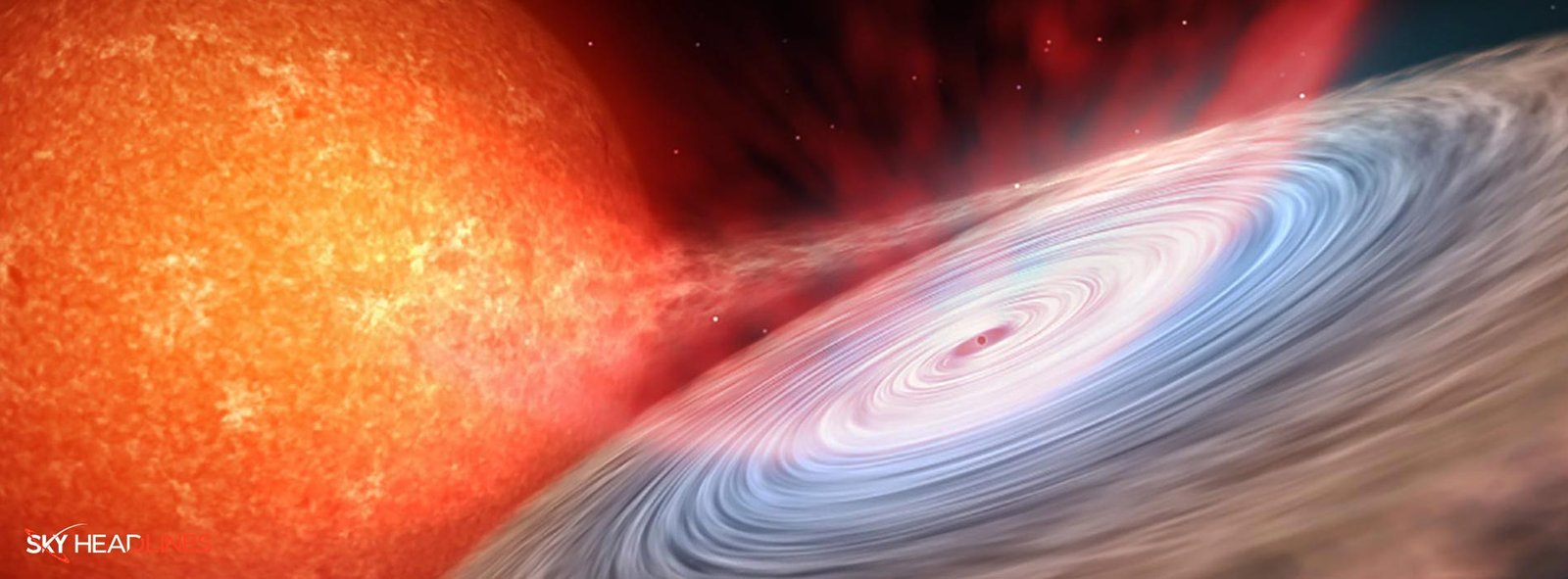Astronomers are getting closer to identifying sources of continuous gravitational waves. This is all thanks to analyses of Scorpius X-2, a neutron star accreting matter from a low-mass binary companion.
Astronomers progress in detecting gravitational waves!
So far, cosmologists have only identified gravitational waves in the form of brief bursts from black hole-neutron star mergers. Non-merging compact objects can produce an unending stream of gravitational waves, but they are weaker than those emitted by mergers. Low-mass X-ray binary systems are particularly likely candidates for emitting continuous gravitational waves. In these systems, a dense neutron star sweeps up matter torn from a nearby companion star.
What is Scorpius X-2?
9,000-light-year-away binary system Scorpius X-2 (a neutron star) is a perfect example. A 1.4-solar-mass neutron star accreting material from a companion star half the mass of our sun. When the stolen gas flows onto the neutron star’s surface, it heats up and emits bright X-rays. As the gas piles up, the neutron star becomes asymmetrically deformed, and this deformation results in a torque being imparted on the neutron star’s spin, speeding it up.
Astronomers used data from the Laser Interferometer Gravitational-Wave Observatory (LIGO) in the US, Virgo in Europe, and KAGRA in Japan. Thus, during the third observational run from April 2019 to early 2020, scientists analyzed data but could not detect continuous gravitational wave emissions from Scorpius X-2.
However, researchers established more stringent limits on the frequency and strength of persistent gravitational waves. These signals may now be observable in the upcoming observing run starting in May. Expect the upcoming run to be more sensitive than previous ones. It has the ability to detect even weaker gravitational-wave signals.
The amount of matter flowing onto a neutron star is connected to the frequency of its spin and the frequency of gravitational waves it emits. A higher flow rate results in a stronger torque, which generates a counteracting torque from the emission of gravitational waves. This also helps maintain balance and prevents the neutron star from exploding.
What does Jared Wofford say in his statement?
“Jared Wofford” is a Ph.D. candidate at the Rochester Institute of Technology in New York. He worked on the study, and said in a statement: “For the first time, this search is now sensitive to models of the possible torque balance scenario of the system, which states that the torques of the gravitational waves and accretion of matter onto the neutron star are in balance,”. Moreover, he said: “In the coming years, we expect better sensitivities from more data taken by Advanced LIGO observing runs probing deeper into the torque balance scenario in hopes to make the first continuous wave detection.”
The results set maximum limits for gravitational waves in a frequency range from 25 Hz to 1,600 Hz. This range is equivalent to spin frequencies from 12.5 Hz to 800 Hz. If a system emits continuous gravitational waves, it would give scientists more insights into the accretion process in low-mass X-ray binaries and the characteristics of neutron stars within those systems.





